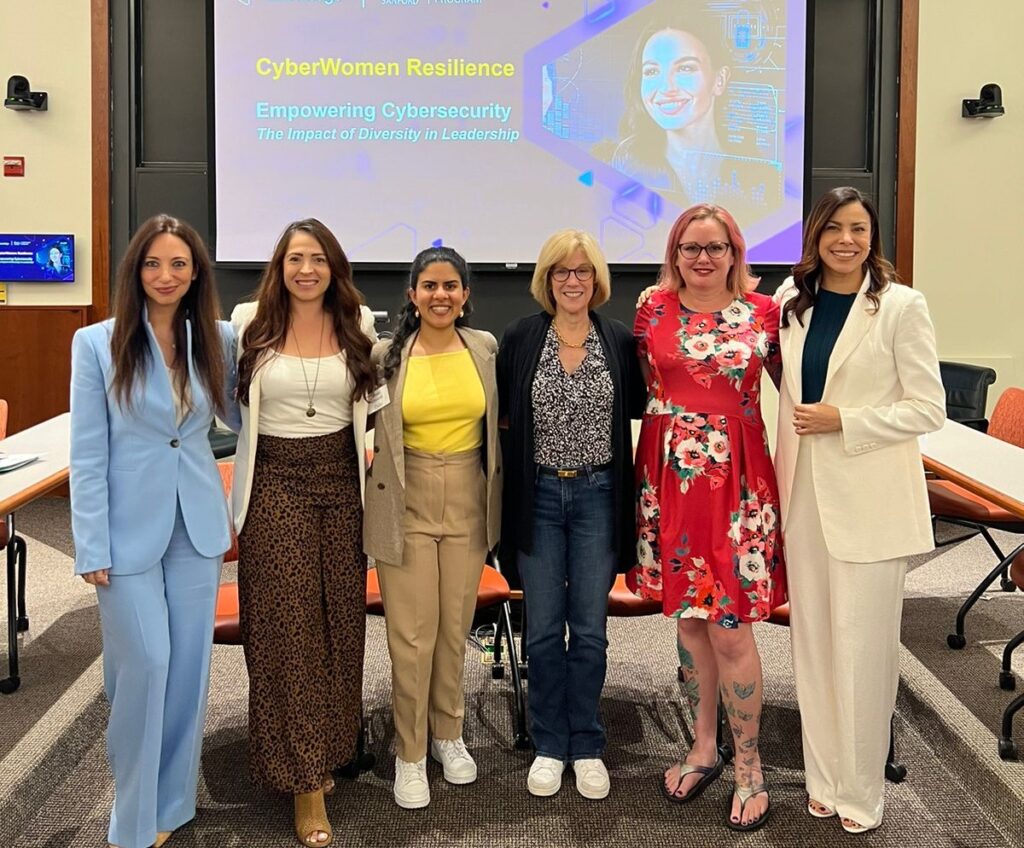ABOUT US
Cytek Security provides state-of-the-art cybersecurity solutions, delivered by the world’s top cyber experts. This includes advisory and implementation services, managed security services, and capability building.
In today’s hyper-connected world, all sectors – from finance and energy to healthcare and transportation – are increasingly reliant on digital infrastructure. While this reliance fuels innovation and efficiency, it also exposes these sectors to ever-evolving cyberattacks.
It has come to a point at which security risks have transcended individual organizations. Cyber threats exploit interconnected networks and shared vulnerabilities, jeopardizing not just a single organization’s operations, but the stability and resilience of entire sectors. Safeguarding critical infrastructure like energy grids, financial systems, and healthcare networks demands a new, sector-wide approach to cybersecurity.
Also, effective cybersecurity requires a deep understanding of the specific context within which a system operates. This context encompasses the unique vulnerabilities and attack vectors inherent to each sector, along with the regulatory landscape and stakeholder dynamics.
For example, defending a power grid requires expertise in industrial control systems (ICS) and the interconnectedness of critical infrastructure, while securing a financial institution necessitates understanding complex financial transactions and data privacy regulations.
Expertise, built on this contextual understanding, is equally crucial. Traditional one-size-fits-all approaches often fall short, as cyber threats are increasingly tailored to exploit sector-specific vulnerabilities. In-depth knowledge of relevant technologies, threat actors, and best practices empowers defenders to anticipate and counter targeted attacks before they can inflict significant damage.
The move towards Sectoral Security Operations Centers (SSOC) represents a paradigm shift in governmental cybersecurity strategy. While “traditional” Security Operations Centers (SOCs) focus on protecting individual organizations, SSOCs extend their gaze across an entire sector, fostering collaboration and information sharing amongst key stakeholders.
In this whitepaper we will explore SSOCs’ advantages, examine the growing trend among governments, mapping their critical infrastructure sectors in order to better protect them, and discuss the World Bank’s new Sectoral Cybersecurity Maturity Model.
Beyond walls: advantages of Sectoral SOCs
While individual Security Operation Centers (SOCs) play a vital role in organizational cybersecurity, they can tremendously benefit from cooperating with other SOCs within their sector for the purpose of generating an overall sectoral cybersecurity posture. SSOC’s collaborative approach offers significant advantages across multiple dimensions:
Unified threat intelligence and visibility
- Breaking the silos: Individual organizational SOCs gather data solely from their organization’s systems, providing a limited view of the threat landscape. SSOCs aggregate and analyze data from across the sector, including threat intelligence shared by member organizations, creating a comprehensive picture of emerging threats and attack vectors.
- Early warning and proactive defense: This broader visibility allows SSOCs to identify sector-wide trends and indicators of compromise (IOCs) early on, enabling proactive measures to mitigate threats before they impact individual organizations.
Enhanced response and damage control
- Coordinated countermeasures: When a cyberattack hits one organization, others in the sector are often indirectly affected. SSOCs enable rapid, coordinated responses across the sector, facilitating resource sharing and joint efforts to contain the attack and minimize damage.
- Unified incident response protocols: By establishing standardized incident response protocols, SSOCs streamline communication and cooperation during critical moments, ensuring swift and effective action when threats materialize.
Knowledge sharing and collective learning
- Breaking down barriers: Information silos hinder effective defense. SSOCs foster collaboration and knowledge sharing amongst organizations, facilitating the exchange of threat intelligence, best practices, and lessons learned from incidents. This collective learning strengthens the cybersecurity posture of all members within the sector.
- Collaborative defense strategies: By sharing expertise and vulnerabilities, SSOCs enable the development of sector-wide defense strategies, addressing systemic weaknesses and building a more resilient security ecosystem.
Risk management and prioritization
- Sector-wide risk assessment: SSOCs conduct comprehensive risk assessments of the entire sector, identifying critical vulnerabilities and prioritizing remediation efforts based on their potential impact across the ecosystem. This ensures resources are allocated optimally for maximum impact.
- Standardized risk frameworks: By establishing standardized risk frameworks, SSOCs provide a superior approach to risk management within the sector, enabling transparent evaluation and comparison of risks across different organizations.
Regulatory compliance and stakeholder confidence
- Harmonized compliance efforts: SSOCs can support compliance with sector-specific security regulations by facilitating shared understanding of requirements and best practices. This reduces redundancy and streamlines compliance efforts for member organizations.
- Enhanced stakeholder trust: The collaborative approach and improved security posture fostered by SSOCs inspire greater trust from stakeholders, including investors, consumers, and regulators, contributing to the overall health and stability of the sector.
Economies of scale
Sectoral Security Operations Centers (SOCs) leverage economies of scale to benefit smaller organizations within a sector. They allow these entities to pool resources. This grants them access to advanced cybersecurity services, like extensive forensics capabilities, at a significantly lower cost compared to doing it alone. This collaborative approach strengthens the overall cyber resilience of the sector by offering high-quality protection to a wider range of organizations.
Building Sectoral SOCs – A roadmap
Below, we are going to present major milestones governments should achieve on their way to design, build and operate SSOCs.
Adopting a sectoral cybersecurity view
Critical infrastructure (CI) is naturally a prime candidate for sectoral cybersecurity practices. Many countries have already mapped their critical infrastructure from a sectoral view, with the goal of developing a systematic plan on how to defend those sectors against cyberattacks. The DGAP’s report, Mapping the World’s Critical Infrastructure Sectors paints a clear picture of which parts of the world are already deep into this process. 
Below, coming from the same report, you can see the most common CI sectors:


In order to internationally advance sectoral cybersecurity protection, capacity building and cyber resilience, the World Bank has developed its Sectoral Cybersecurity Maturity Model (SCMM). Next, let’s get to know the model and examine how it can be leveraged by governments when planning SSOCs and the overall protection of their CI sectors.
Assessing each sector according to the World Bank’s Sectoral Cybersecurity Maturity Model (SCMM)
The SCMM, was developed by the World Bank as an innovative framework to assess and improve the cyber resilience of critical sectors. It empowers stakeholders within a critical sector to work together, evaluate their collective cybersecurity posture, and chart a course for continuous improvement.
The main innovation of this methodology is its ability to capture any sector as an entire system, rather than analyzing a single entity or technical system. It can also be applied to any sector of the economy (sector-agnostic). The SCMM has been designed to take into account both the needs and desired cyber capabilities of sectoral stakeholders and the dependencies, relations, and interactions among them and with external entities.
The SCMM is envisioned to become a globally accepted framework to help relevant stakeholders examine critical sectors of the economy to identify and analyze gaps in cybersecurity practices, capabilities, and resources within a sector. Next, it helps in developing a roadmap to gradually mature the sector’s ability to manage cyber risks and address the continually evolving cyber threat environment.
SCMM: Main principles
The SCMM employs a multi-layered approach, catering to different stakeholder groups within the sector:
- Layer 1 (LoA1): National entities – This layer helps national governments and regulators evaluate their policies, laws, and frameworks for supporting cybersecurity within the sector.
- Layer 2 (LoA2): Sectoral supervisory authorities – This layer assesses the supervisory authorities’ capacity to oversee and enforce cybersecurity standards within the sector.
- Layer 3 (LoA3): Sector key entities – This layer evaluates the cybersecurity practices and capabilities of individual organizations within the sector.
By addressing the specific needs of each stakeholder group, the SCMM fosters a collaborative environment where everyone plays an important role in building a more secure ecosystem.
SCMM: Planning and analysis
Planning a sectoral SOC, based on the SCMM framework requires to first assess the sector’s cybersecurity maturity levels across five key dimensions:
- Governance and legal framework: This dimension analyzes the adequacy of policies, laws, and regulations governing cybersecurity within the sector.
- Risk management and incident response: This dimension evaluates the sector’s ability to identify, assess, and manage cybersecurity risks and respond effectively to incidents.
- Technical and operational measures: This dimension assesses the implementation of technical controls and operational practices to protect critical infrastructure and information.
- Capacity building and awareness: This dimension evaluates the sector’s efforts to build employee and stakeholder awareness of cybersecurity threats and best practices.
- Cooperation and information sharing: This dimension assesses the level of collaboration and information sharing among stakeholders within the sector.
Each dimension is further broken down into factors and indicators, providing a granular understanding of the sector’s strengths and weaknesses.
At the end of the analysis, the sector is assigned a maturity score based on specific considerations, such as the level of commitment of stakeholders to strengthening the cybersecurity posture of their organization or sector as a whole, the effectiveness and efficiency of governance frameworks and coordination mechanisms, the implementation of standards, policies, rules, and requirements, etc.
The SCMM’s 5 maturity levels


Source: World Bank
This detailed analysis and maturity score become the foundation for developing a targeted and actionable roadmap for improvement.
SCMM: Drawing a clear cybersecurity path forward
The SCMM’s comprehensive assessment process enables the uncovering of weaknesses in the sector’s overall cybersecurity posture, enabling stakeholders to prioritize remediation efforts. It also serves as the cornerstone in developing a roadmap for improvement, providing a clear path forward, outlining specific actions and recommendations for each stakeholder group to enhance their cybersecurity capabilities.
Naturally, this multi-layered approach encourages dialogue and collaboration among stakeholders, facilitating the sharing of best practices and resources. It also ensures that sector-wide vulnerabilities are addressed, bolstering the collective cyber resilience of the entire ecosystem.
Summary
In today’s cyberspace, governments must ensure their CI sectors are well protected. They have a vital role to play in fostering collaboration and knowledge sharing across these sectors.
In this whitepaper we discussed one key strategy – establishing Sectoral Security Operations Centers (SSOCs). These collaborative hubs bring together expertise and data from across a sector, providing a consolidated view of threats and vulnerabilities.
Sectoral SOCs, championed by governments, represent a crucial step towards building a more resilient and secure digital landscape, safeguarding critical infrastructure, fostering economic stability, and protecting the well-being of entire communities.
Cytek Security specializes in designing, building and setting up SOCs for governments and enterprises around the world, including sectoral SOCs. Contact us to learn more.





